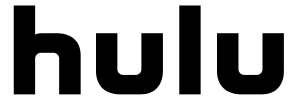




Land your dream job as
a Technical Designer
Getting your foot in the door with an amazing company can be a challenge. Our recruiting experts are ready to help you land your next dream role.
View Open Roles
Hire
a Technical Designer
With over 40 years of recruiting experience, we can help you fill any open role, plus, offer insight into current market rates and team structuring.
Find Talent

FAQ
What is a Technical Designer?
A technical designer in the fashion industry is a key player in bringing garment concepts to life. They serve as the bridge between design and production—translating creative sketches into technical specifications that guide how each piece is constructed. Technical designers work closely with apparel designers, product development teams, and manufacturers to ensure that garments fit properly, meet quality standards, and are production-ready.
Using industry-standard tools like Adobe Illustrator, CLO 3D, and Gerber or Optitex, technical designers create tech packs, detailed construction specs, and fit comments. They account for fabric behavior, garment measurements, and sewing techniques—ensuring consistency across sizes and factories. Whether it’s perfecting the drape of a blouse or resolving fit issues in a structured blazer, technical designers in fashion are essential to delivering high-quality, wearable collections that align with brand vision and production realities.
What are Measurable KPIs for Technical Designers?
For technical designers in the fashion industry, success is measured not only by creativity but by precision, efficiency, and cross-functional collaboration. Measurable Key Performance Indicators (KPIs) for technical designers can vary depending on the responsibilities and goals of the role within the office. Here are some commonly used KPIs for technical designers:
- Fit Accuracy: Track the number of sample rounds required to achieve final approval. Fewer revisions signal strong pattern interpretation and effective communication with design and production teams.
-Tech Pack Quality: Measure the number of errors or clarifications needed from factories due to incomplete or inconsistent tech packs. A low correction rate reflects attention to detail and clarity in construction documentation.
-Timeliness of Deliverables: Compare estimated vs. actual timelines for completing tech packs, fit reviews, and spec updates to evaluate project efficiency.
-Cross-Functional Collaboration: Monitor feedback from design, production, and merchandising teams on responsiveness, clarity, and ability to support fast turnarounds without compromising quality.
-Cost Awareness and Fabric Efficiency: Track the number of BOM (Bill of Materials) revisions or overages due to initial inaccuracies—an indicator of how well a technical designer accounts for material usage and cost considerations.
-Professional Development: Assess participation in ongoing training, software upskilling, and adoption of tools like 3D design platforms or PLM systems to stay current with industry innovations.
KPIs should be customized to the brand’s workflow, production model, and product category. Regularly reviewing and refining these benchmarks ensures that performance goals stay aligned with evolving business priorities.
What Experience is Needed to be a Technical Designer?
To become a technical designer, a combination of education, years of experience, and technical skills is desired. Typically, technical designers have a bachelor's degree or higher in fields like industrial design, product design, or mechanical engineering. Practical experience gained through internships or entry-level positions in design firms or relevant industries is valuable. Proficiency in using design software, such as CAD and 3D modeling tools, is crucial, along with knowledge of industry-specific standards and best practices.
Technical designers require a combination of education, experience, technical skills, problem-solving abilities, collaboration, and effective communication. A degree in a relevant field, practical experience, proficiency in design software, and a well-curated portfolio are key components of a successful technical designer's background.
What Tools and Softwares are Popular for Technical Designers?
Technical designers rely on a range of tools tailored to their specific industry. In fashion, Adobe Illustrator remains the standard for creating flat sketches and technical drawings, while platforms like CLO 3D, Browzwear, and Style3D are widely used for virtual garment visualization and prototyping. These tools allow technical designers to test fit, drape, and construction in a 3D environment before physical samples are made, streamlining the development process. Techpacker is also popular for building detailed tech packs and collaborating with manufacturers, while platforms like Swatchbook and Bandicoot support digital fabric libraries and material specifications.
For those in product design, engineering, or industrial sectors, tools like AutoCAD, SolidWorks, CATIA, Inventor, and Creo continue to lead for 2D drafting and complex 3D modeling. Shapr3D is gaining traction thanks to its cross-platform accessibility and ease of use on devices like iPads and Vision Pro. Affinity Designer and CorelDRAW offer viable alternatives for vector editing, especially in textile and print design. As AI and AR technologies evolve, platforms such as Zero10 and emerging tools like HAIGEN are changing how technical designers ideate, sketch, and test their work, reducing development time and expanding creative capabilities. Staying adaptable and up to date with these tools is crucial for technical designers who aim to remain competitive in a rapidly shifting landscape.
.avif)


























.png)

.png)